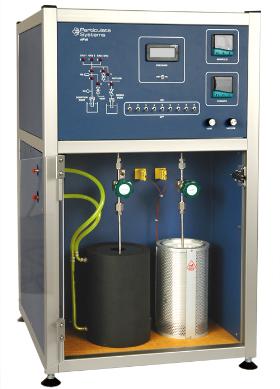Volumetric Analyzers
Volumetric Analyzers are designed to measure the high-pressure adsorption isotherms with hydrogen, methane, carbon dioxide and other gases using the static volumetric method. Typical applications for this instrument include catalysts, zeolites, activated carbons, carbon nanotubes, and hydrides. Understanding the adsorption characteristics of materials is critical in the research and advancement of hydrogen storage, fuel cells and batteries stack gas scrubbers, and hydrocarbon traps.
Technique
The volumetric technique consists of introducing (dosing) a known amount of gas (adsorptive) into the chamber containing the sample to be analyzed. When the sample reaches equilibrium with the adsorbate gas, the final equilibrium pressure is recorded. These data are then used to calculate the quantity of gas adsorbed by the sample. This process is repeated at given pressure intervals until the maximum preselected pressure is reached. Each of the resulting equilibrium points (volume adsorbed and equilibrium pressure) is then plotted to provide an isotherm. Excellent reproducibility and accuracy are obtained by using separate transducers for dosing the sample and for monitoring the pressure in the sample chamber.
